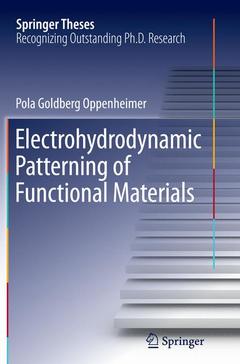Description
Electrohydrodynamic Patterning of Functional Materials, Softcover reprint of the original 1st ed. 2013
Springer Theses Series
Author: Oppenheimer Pola Goldberg
Language: English
Subjects for Electrohydrodynamic Patterning of Functional Materials:
105.49 €
In Print (Delivery period: 15 days).
Add to cartPublication date: 08-2015
Support: Print on demand
Publication date: 08-2013
137 p. · 15.5x23.5 cm · Hardback
Description
/li>Contents
/li>Comment
/li>
EHD pattern formation enables for instance, the fabrication of multi-scale structured arrays as surface enhanced Raman scattering (SERS)-active platforms. Furthermore, crystalline and conductive polymers are patterned using the EHD approach and the underlying structure formation mechanisms are discussed. This extension towards functional material systems offers interesting prospects for potential applications. Findings of this thesis are very promising for use in optoelectronic devices.
Nominated as an outstanding Ph.D. thesis by the University of Cambridge, UK
Provides a detailed introduction to electrohydrodynamic lithography and its principles
Describes a novel and unique lithographic method of inducing and exploiting surface instabilities
Seeds interdisciplinary cooperation and represents technology development at the interface of physical, biomedical and materials science
Includes supplementary material: sn.pub/extras

